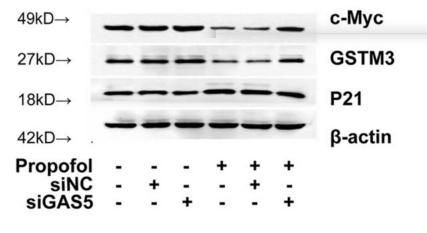GSTM3 Antibody - #DF12408
| Product: | GSTM3 Antibody |
| Catalog: | DF12408 |
| Description: | Rabbit polyclonal antibody to GSTM3 |
| Application: | WB IHC |
| Cited expt.: | WB |
| Reactivity: | Human, Mouse |
| Prediction: | Pig, Bovine, Horse, Sheep, Rabbit, Dog |
| Mol.Wt.: | 27-29 kDa; 27kD(Calculated). |
| Uniprot: | P21266 |
| RRID: | AB_2845213 |
Related Downloads
Protocols
Product Info
*The optimal dilutions should be determined by the end user. For optimal experimental results, antibody reuse is not recommended.
*Tips:
WB: For western blot detection of denatured protein samples. IHC: For immunohistochemical detection of paraffin sections (IHC-p) or frozen sections (IHC-f) of tissue samples. IF/ICC: For immunofluorescence detection of cell samples. ELISA(peptide): For ELISA detection of antigenic peptide.
Cite Format: Affinity Biosciences Cat# DF12408, RRID:AB_2845213.
Fold/Unfold
brain GST; brain type mu glutathione S transferase; glutathione S alkyltransferase M3; glutathione S aryltransferase M3; glutathione S transferase M3 (brain); glutathione S transferase M3; Glutathione S transferase Mu 3; glutathione S transferase, Mu 3; Glutathione S-transferase Mu 3; GST class mu 3; GST class-mu 3; GST5; GSTB; Gstm3; GSTM3-3; GSTM3_HUMAN; GTM3; hGSTM3-3; MGC3310; MGC3704; S (hydroxyalkyl)glutathione lyase M3;
Immunogens
A synthesized peptide derived from human GSTM3, corresponding to a region within C-terminal amino acids.
- P21266 GSTM3_HUMAN:
- Protein BLAST With
- NCBI/
- ExPASy/
- Uniprot
MSCESSMVLGYWDIRGLAHAIRLLLEFTDTSYEEKRYTCGEAPDYDRSQWLDVKFKLDLDFPNLPYLLDGKNKITQSNAILRYIARKHNMCGETEEEKIRVDIIENQVMDFRTQLIRLCYSSDHEKLKPQYLEELPGQLKQFSMFLGKFSWFAGEKLTFVDFLTYDILDQNRIFDPKCLDEFPNLKAFMCRFEALEKIAAYLQSDQFCKMPINNKMAQWGNKPVC
Predictions
Score>80(red) has high confidence and is suggested to be used for WB detection. *The prediction model is mainly based on the alignment of immunogen sequences, the results are for reference only, not as the basis of quality assurance.
High(score>80) Medium(80>score>50) Low(score<50) No confidence
Research Backgrounds
Conjugation of reduced glutathione to a wide number of exogenous and endogenous hydrophobic electrophiles. May govern uptake and detoxification of both endogenous compounds and xenobiotics at the testis and brain blood barriers.
The N-terminus is blocked.
Cytoplasm.
Testis and brain.
Belongs to the GST superfamily. Mu family.
Research Fields
· Human Diseases > Drug resistance: Antineoplastic > Platinum drug resistance.
· Human Diseases > Cancers: Overview > Pathways in cancer. (View pathway)
· Human Diseases > Cancers: Overview > Chemical carcinogenesis.
· Human Diseases > Cancers: Specific types > Hepatocellular carcinoma. (View pathway)
· Metabolism > Metabolism of other amino acids > Glutathione metabolism.
· Metabolism > Xenobiotics biodegradation and metabolism > Metabolism of xenobiotics by cytochrome P450.
· Metabolism > Xenobiotics biodegradation and metabolism > Drug metabolism - cytochrome P450.
· Metabolism > Xenobiotics biodegradation and metabolism > Drug metabolism - other enzymes.
References
Application: WB Species: human Sample: U251 cells
Restrictive clause
Affinity Biosciences tests all products strictly. Citations are provided as a resource for additional applications that have not been validated by Affinity Biosciences. Please choose the appropriate format for each application and consult Materials and Methods sections for additional details about the use of any product in these publications.
For Research Use Only.
Not for use in diagnostic or therapeutic procedures. Not for resale. Not for distribution without written consent. Affinity Biosciences will not be held responsible for patent infringement or other violations that may occur with the use of our products. Affinity Biosciences, Affinity Biosciences Logo and all other trademarks are the property of Affinity Biosciences LTD.

